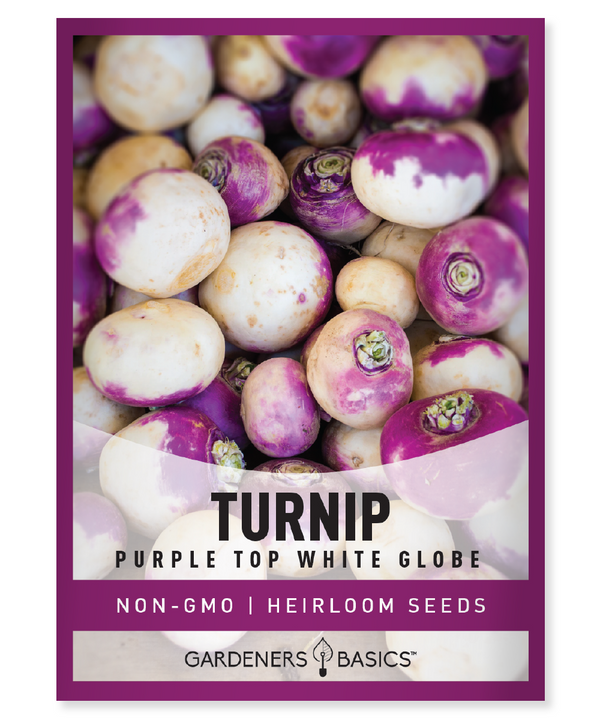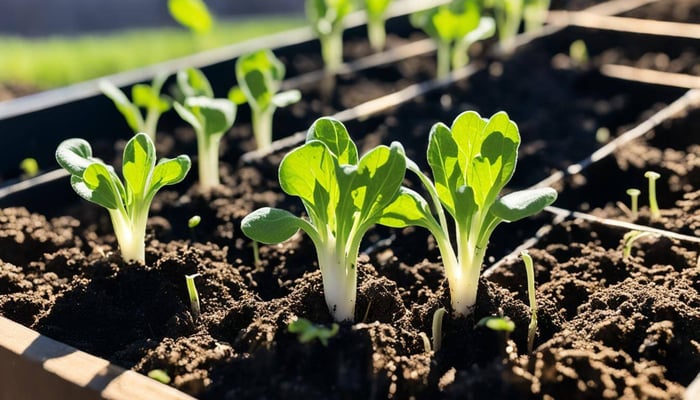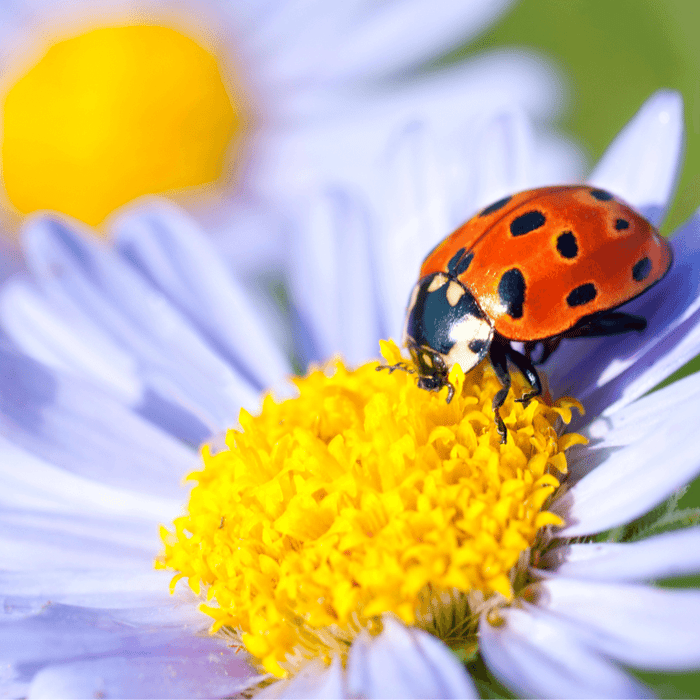Introduction
Companion planting is a time-honored technique that involves growing different plants together for mutual benefit. This practice has been around for centuries, and it has been used to improve soil health, enhance plant growth, and deter pests. Gardeners can create an ecosystem where everything works harmoniously by choosing the right plants to grow together. Regarding companion planting, turnips are some of the most versatile vegetables. Discovering turnip companion plants will help you have a more productive garden.
These root veggies are packed with nutrients, and they can be cooked in a variety of ways. They are also easy to grow and care for, making them an ideal choice for any gardener.
The Benefits of Companion Planting
One of the primary benefits of companion planting is improved soil health. Different plants have different nutrient needs, and growing them together can create a balanced ecosystem that supports healthy soil.
For example, legumes like beans and peas fix nitrogen in the soil, which helps other plants grow better. Another benefit of companion planting is pest management.
Growing certain plants together can repel or attract specific insects and pests. For example, alliums like onions and garlic are known for their ability to repel aphids and other pests.
They also add flavor to dishes made with turnips. Companion planting can enhance the flavor of your harvests.
Certain plants complement each other's flavors when grown together. For example, herbs like thyme and chamomile add depth of flavor to turnips while attracting pollinators that ensure a better fruit set.
Purple Top White Globe Turnip Seeds

$2.49
Purple Top White Globe Turnip Seeds - Heirloom, Non-GMO, Non-Hybrid, Open-Pollinated Grow delicious, nutrient-packed Purple Top White Globe Turnips with our high-quality heirloom seeds! These easy-to-grow, cool-season root vegetables are perfect for home gardeners seeking reliable, flavorful crops. Each seed… read more
The Importance of Turnips as a Versatile Vegetable
Turnips may not get as much attention as other veggies, but they are endlessly versatile in cooking! For a crispy and flavorful side dish, you can roast them whole or in wedges. Or, boil them with potatoes to make a hearty mashed vegetable dish.
You can also slice them thinly and eat them raw in salads or pickled in jars. Turnips are also packed full of nutrients that can help keep your body healthy.
They're high in fiber, which helps support digestion, and they contain vitamins C and K and minerals like calcium, iron, and potassium. Incorporating turnips into your diet is a great way to get these essential nutrients into your body.
Companion planting is an effective gardening technique that can enhance soil health, improve pest management, and increase flavor in your harvests. And when it comes to finding the perfect vegetable for companion planting, turnips are hard to beat!
Their versatility, paired with their nutritional benefits, make them an excellent choice for any garden. So don't overlook the humble turnip – it might surprise you just how much potential it has!
The Benefits of Turnip Companion Plants
Companion planting is the practice of growing different plants that benefit each other. When it comes to turnips, numerous companion plants can be grown alongside them to improve soil health, deter pests, and enhance flavor. First and foremost, turnip companion plants can improve soil health.
Legumes
Legumes such as beans and peas are a great example of this. They can fix nitrogen in the soil, vital for plant growth.
When planted with turnips, they help provide essential nutrients that the turnips need to thrive. In addition to improving soil health, certain companion plants can deter pests from attacking the turnips.
Alliums
Alliums such as onions and garlic are great examples of this. Not only do these plants add flavor when cooked with turnips, but they also contain compounds that help protect against pests like aphids and cabbage worms.
But it's not just about deterring pests - some companion plants can also attract beneficial insects to the garden. For example, planting herbs like thyme and chamomile beside your turnips can attract bees and other pollinators.
This is important because many pollinators are in decline due to habitat loss and pesticide use. By creating a diverse garden ecosystem with companion planting, you're helping support these important insects.
Another benefit of growing turnip companion plants is enhanced flavor in your harvest. For example, brassicas like broccoli and cabbage have compounds that enhance the flavor of nearby crops, like turnips, when grown together.
Herbs
Herbs such as rosemary or sage also add an interesting twist when cooked with roasted or sautéed turnips. Growing various crops together creates a bio-diverse ecosystem which helps promote beneficial microbial activity in the soil - increasing overall fertility long term compared with monoculture cropping systems.''
Overall, growing companion plants alongside turnips is a smart and effective way to improve soil health, deter pests, enhance flavor, and support beneficial insects. By embracing this natural gardening method, we can create thriving gardens that provide beauty and sustenance for ourselves and the environment.
Popular Turnip Companion Plants
Legumes - The Best Soil Buddies for Turnips
If you're looking to make your turnips grow like crazy, then plant some legumes alongside them. Legumes, such as beans and peas, are nitrogen-fixing plants that improve soil fertility, making them the perfect soil buddies for turnips.
Nitrogen fixation is a natural process that allows these leguminous plants to convert atmospheric nitrogen into nitrogen that other plants can use. This means that by planting legumes near turnips, you're enriching the soil and providing essential nutrients to your turnip plants.
Alliums - Keeping Pests at Bay while Adding Flavor
Alliums such as onions and garlic are used in various popular dishes and have medicinal properties and pest-deterrent qualities. Planting alliums alongside turnips can help keep pests at bay while adding flavor to your vegetables.
Alliums contain sulfur compounds that repel insects and other pests naturally. These compounds are responsible for allium's distinct smell and taste, making them an excellent addition to any garden.
Brassicas - Mutual Beneficiaries
Brassicas such as broccoli and cabbage make amazing companion plants for turnips because they share the same pests but have different tastes, which can cause the pest to move on instead of staying on both crops causing damage together. Planting brassicas next to turnips creates a mutually beneficial environment where both crops protect each other from common pests like aphids or caterpillars.
Vegetable Seed Vault Kit | 35 Variety Pack

$29.95
$49.95
Ultimate Survival Seed Vault: 16,000+ Non-GMO Heirloom Vegetable Seeds for Emergency Preparedness Introducing the Seed Vault Kit, your all-in-one solution for emergency preparedness and sustainable gardening. This premium seed kit contains over 16,000 non-GMO, Heirloom, Non-Hybrid, and Open Pollinated seeds,… read more
Herbs - Not Just Flavor Enhancers But Insect Magnets Too!
Herbs like thyme and chamomile may be small but have immense benefits when planted alongside turnips. They add flavor and aroma to your turnips and attract beneficial insects such as pollinators and predators that prey on harmful pests. Some herbs, such as chamomile, are also known for their anti-fungal properties that can help prevent plant diseases.
The Importance of Diversity
While all of these companion plants offer excellent benefits for turnips, it's essential to remember the importance of diversity in your garden. Don't plant all your turnips with legumes or alliums; instead, try mixing things up to get the benefits from different plants. By doing this, you will have a better harvest and promote a healthy ecosystem where different species complement each other.
Planting companion plants is an excellent way to naturally enhance your turnips' growth. Legumes improve soil fertility, while alliums keep pests at bay and add flavor.
Brassicas provide mutual pest protection, while herbs attract beneficial insects and add more flavor! Remember to diversify your garden while planting these companions alongside your turnips to promote a healthy ecosystem!
Niche Turnip Companion Plants
Marigolds for Nematode Control and Insect Attraction
Are you tired of nematodes ruining your turnip harvest every year? Then plant some marigold seeds!
These sunny yellow flowers add a pop of color to your garden and serve as a natural nematode repellent. Their roots exude a chemical that repels these microscopic pests, keeping them away from your turnips.
But that's not all - marigolds are also fantastic at attracting beneficial insects like ladybugs and lacewings, which will help control other pests in your garden. And let's not forget their wonderful scent, which can help mask the smell of turnips and prevent some pests from finding them in the first place.
Nasturtiums for Aphid Control and Added Color to the Turnip Garden
Aphids can quickly become a nightmare for any gardener. But fear not - nasturtiums are here to save the day!
These vibrant flowers are a natural aphid repellent, as they exude chemicals that make it difficult for these pests to feed and reproduce. In addition to their pest-repelling powers, nasturtiums add a beautiful pop of color to any garden.
Their bright orange, red, and yellow blooms provide a stunning contrast against the green foliage of turnips and other vegetables. And if you're feeling adventurous, you can even eat their peppery leaves and flowers!
Borage for Pollinator Attraction and Improved Soil Health
Borage might not be as well-known as other companion plants on this list, but it packs quite the punch regarding benefits for turnips. For one thing, borage is an excellent pollinator attractor - its blue star-shaped flowers will bring bees galore to your garden, ensuring that your turnips get the pollination they need to thrive. But borage doesn't just help with pollination - it's also great for soil health.
Its deep taproot helps break up compacted soil and brings nutrients from deeper layers. And when borage is chopped and dropped as a mulch around turnips, it adds valuable organic matter to the soil and can help suppress weeds.
Conclusion
Companion planting with turnips doesn't have to be complicated or overwhelming. By choosing the right companion plants, you can enhance the health and yield of your turnip crop while also creating a beautiful and diverse garden space. From marigolds to nasturtiums to borage (and beyond!), many unique plants can help your turnips thrive.
So why not experiment a bit this growing season? You might just be surprised by how much of a difference these little companions can make!
 Frequently Asked Questions (FAQs) Turnip Companion Plants
Frequently Asked Questions (FAQs) Turnip Companion Plants
1. What are companion plants for turnips?
Companion plants for turnips include peas, beans, and other legumes, which can help fix nitrogen in the soil, benefiting the turnips. Other good companion plants are aromatic herbs like dill, mint, and chamomile, which can help deter pests.
2. What plants should not be grown near turnips?
Turnips generally do not grow well near other root crops like carrots, potatoes, or radishes, as they compete for the same nutrients in the soil. They also should not be planted near mustard plants, as they can attract pests that harm turnips.
3. What are the benefits of companion planting?
Companion planting can offer a range of benefits, such as pest control, enhancing soil nutrients, improved plant health, and maximizing the use of space. Certain plants can also help each other by attracting beneficial insects or repelling harmful pests.
4. Can turnips and tomatoes be planted together?
Turnips and tomatoes are not typically planted together. Tomatoes need more space and a different nutrient balance than turnips, and they can overshadow turnips, which could inhibit their growth.
5. When is the best time to plant turnips?
The best time to plant turnips is early spring or late summer. They prefer cool temperatures and can be sown when the soil can be worked in the spring. For a fall harvest, sow turnip seeds 2-3 months before the first frost date in your area.
6. How much space do turnips need to grow?
Turnips need about 2-4 inches of space between each plant to grow properly. This allows them room to develop their roots and prevents competition for nutrients and water.
7. How long does it take for turnips to mature?
Turnips usually mature in about 2-3 months after planting. However, they can be harvested earlier if you prefer smaller, tender turnips.
8. Can I use turnip greens in my meals? Absolutely!
Turnip greens are edible and highly nutritious. They can be used in salads, sautés, soups, and more.
9. What are some common pests and diseases of turnips?
Turnips can be affected by pests like flea beetles, aphids, and root maggots. Diseases can include clubroot, powdery mildew, and black rot. Companion planting with aromatic herbs can help deter some of these pests.
10. How do I know when my turnips are ready to harvest?
Turnips are ready to harvest when their roots are about 2-3 inches long. However, they can be harvested earlier if desired. The tops of the turnip roots will usually be visible above the soil when they are ready to harvest.







